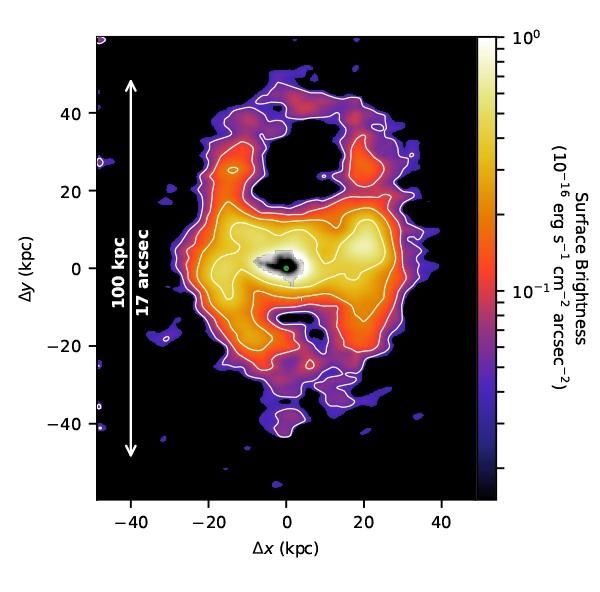Exploring the influence of galactic winds from a distant galaxy called Makani, UC San Diego’s Alison Coil, Rhodes College’s David Rupke and a group of collaborators from around the world made a novel discovery. Published in Nature, their study’s findings provide direct evidence for the first time of the role of galactic winds—ejections of gas from galaxies—in creating the circumgalactic medium (CGM). It exists in the regions around galaxies, and it plays an active role in their cosmic evolution. The unique composition of Makani—meaning wind in Hawaiian—uniquely lent itself to the breakthrough findings.
“Makani is not a typical galaxy,” noted Coil, a physics professor at UC San Diego. “It’s what’s known as a late-stage major merger—two recently combined similarly massive galaxies, which came together because of the gravitational pull each felt from the other as they drew nearer. Galaxy mergers often lead to starburst events, when a substantial amount of gas present in the merging galaxies is compressed, resulting in a burst of new star births. Those new stars, in the case of Makani, likely caused the huge outflows—either in stellar winds or at the end of their lives when they exploded as supernovae.”
Coil explained that most of the gas in the universe inexplicably appears in the regions surrounding galaxies—not in the galaxies. Typically, when astronomers observe a galaxy, they are not witnessing it undergoing dramatic events—big mergers, the rearrangement of stars, the creation of multiple stars or driving huge, fast winds.
Read more at University of California - San Diego
Image: The giant galactic wind surrounding the massive, compact galaxy Makani. The colors and white contour lines show the amount of light emitted by the ionized gas from different parts of the oxygen nebula, from brightest (white) to faintest (purple). The middle part of the image (black) shows the full extent of the galaxy, though most of the galaxy is concentrated at the center (the tiny green circle). The axes show distance from the center of the galaxy in kiloparsecs. (Credit: Figure by: Gene Leung (UC San Diego))


